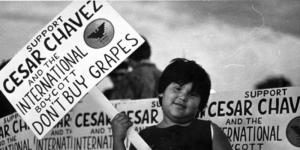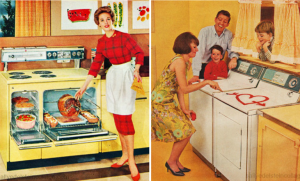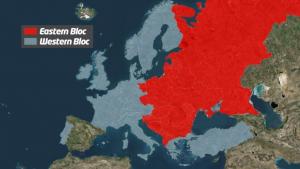Part 3 in the series on Catholic Modern by James Chappel –Chapter One, Catholic Anti-modernism, 1920-1929

In the 1920’s Church was intellectually anti-modern in just about all its respects of that worldview. It rejected the separation of church and state, the capitalist economies, liberal democracy, the value of other religious confessions, and even the modern idea of the nation-state. Practically, many in the Church got along with all of these, even in multi-religious settings. But there was no “coherent and widely espoused language to defend and legitimate interconfessional societies and secular politics.” (p. 23)
Such an anti-modern spirit in the Church is not surprising, Chappel says. The Church was experiencing pressure, and not only from Communist strongholds in Eastern Europe. Anti-Catholicism and anti-clericalism arose in Prussia, Austria, and France as well. (p. 24)
Two Catholic alternatives to modernism emerged. One alternative, anti-modern, looked back to the Medieval period, monarchy and the Holy Roman Empire. The other tried to see past modernity “toward a theological-political settlement not yet seen.” (p. 26) It was anti-modern in a way that chappel calls ultra-modern. Beginning a pattern that continues throughout the book Chappel chooses a representative thinker for each viewpoint.
1. George Moenius and Neo–medievalism
In the 1920’s most Catholics in Europe thought of the Middle Ages as a period of stability. They saw a period in which power was diffused through institutions at several levels. It was a kind of federalism. A “great chain of being … linked together the family, the village, the profession, the Church, and the monarch.” (p. 29)
Catholics idealized a time when there was not the will, and certainly not the power, to carry out total war as Europe had recently experienced. Nation-states with such a capability had only recently organized themselves. Catholics saw little reason why these states had to stay on the scene. A return to an idealistically imagined Middle Ages, where “the Church provided a universally accepted vision of human nature, human society, and the good life,” seemed entirely possible. (p. 29)
George Moenius grew up in rural, working-class Bavaria, where traces of that Medieval life, and certainly stories of what used to be, lingered on. Hitler used Medieval images in support of his campaign of centralization of power. Many Catholics support him, but not Moenius. (p. 29) He criticized Hitler’s “voracious centralization.” A journal he bought and edited was one of the first and soon the most prominent of anti-Nazi voices.
Anti-Semitism, anti-Protestantism, anti-capitalism, anti-German state
Central to the “peace and virtue” of the Middle Ages, Moenius thought, was the Catholic Church. He believed in plural powers, but not plural beliefs. He was anti-Protestant and participated in the common anti-Semitism although without its “paranoid fantasies of an all-powerful ‘world Jewry.’” (p. 31)
As an anti-modern thinker, Moenius didn’t see that Germany as a nation-state had a right to exist. Along with others in Southern Germany and Austria, he opposed Prussian dominance and the modernist German Center Party. Moenius imagined the Holy Roman Empire as hanging on in Austria. To the Protestant, centralizing, national drive in Europe, he opposed a kind of development that was Catholic, imperial, and international. (p. 33)
In Austria bishops taught that Catholic ethics in no way approved of capitalism with its usury, private property, and social atomization. (p. 33) Moenius opposed the capitalist economy because it was destroying medieval guilds in favor of centralizing power in the state. (p. 30
Internationalism
Along with a strong leaning toward regionalism as opposed to central government, Moenius had international convictions. He looked for a universal, Catholic, and anti-modern culture. In Italy and France he saw glimmers of that.
During the 1920’s there was reason to distinguish Mussolini from Hitler. Mussolini was still under the king, and he was congenial to the Catholic Church. The Lateran Accords secured Vatican City for Pope Pius XI. That pope adamantly opposed the secular state, religious freedom, and even the League of Nations. (p. 39) (I wonder if that may have been crucial to the collapse of Woodrow Wilson’s dream.)
In France the program of Laicité, still making news today, was making trouble for the Church in the 1920’s. Even though there were few Protestants in France, they got the blame for Laicité. Action Francaise, another anti-modern movement, was popular among Catholics. Its goal was to get religion back into the public realm. “We must put an end to the ‘carnival of freedom of conscience,’” said one leader of the movement. (p. 35)
(Jacques Maritain)
Maritain is not a key character for this section of the book. He is key later on, and to learn more about him is one of the reasons I chose to study Catholic Modern. A proponent of the modern separation of Church and state, he showed up in previous posts I wrote about the Church in Chile. (For examaple, here.) That separation in Chile led to an overly timid Church in the face of the repressive Pinochet regime. Here Maritain, takes the opposite position, against modernism and for a politically strong, or at least influential, Church. It turns out Maritain’s career includes something like a sea-change in his thinking about separation of Church and state.
In the 1920’s Maritain was arguing, like Moenius, for a natural political order. There should be a weak central authority with most power at the local level and a natural hierarchy among those powers. For both thinkers, the villains were Protestants, Jews, and the German nation-state. According to Maritain, “Protestant principles of individualism and voluntarism were at the root of the monstrous irrationality of modernity.” And,
An essentially messianic people [the Jews] … from the instant that it refuses the true Messiah, must play in the world a fatal role of subversion. (p. 37)
I now understand a little the Church’s insistence that its sin was not anti-Semitism, an ethnic prejudice, but anti-Judaism, a religious prejudice. Supposedly the latter is not as bad, but I don’t think a Jew would have noticed the difference.
Later Maritain took another about-turn. He became one of the strongest opponents of anti-Semitism.
2. Waldemar Gurian and Ultramodern Catholicism
The imagination of an idyllic Middle Ages wasn’t just an intellectual pursuit.
Nostalgia for the medieval trickled into the daily life of millions, many of whom were mourning lost family members [from World War I] and trying to understand the new Europe that had frothed into being. (p. 38)
Just as strong, however, and with equal or more Church support, was an opposite sort of Catholic anti-modern worldview. Chappel calls it ultra-modernism and chooses for its spokesperson a Russian Jewish convert to Catholicism, Waldemar Gurian.
Russian, Jewish, and a denizen of many different places, Gurian finds himself most at home as a Catholic in the Rhineland of Western Germany. That, perhaps even more than his Jewish heritage, distinguishes him from George Moenius. The Rhineland of the post-World War I period was the most progressive area in Germany. A Bavarian rural upbringing supported Moenius’ look to the past. An urban Rhineland setting encouraged Gurian to look forward.
With Jewish roots, Gurian couldn’t look back favorably on the Middle Ages. But he wasn’t content with being exactly modern, either. He tried to see past modernity with a vision of “young, spiritually gifted elites,” who would rejuvenate a dying (as he imagined) modern Germany. (p. 49)
A naïve vision and a vague future
The new spirit would not be capitalist. Gurian resisted totalitarianisms of the right (Hitler) and left (communism). He saw also in capitalism just such a totalizing move in its insistent drive for new markets. The new young elites would imbue society with a Catholic “prophetic spirit,” the only alternative to what he called the “secularized religions” of Nazism or communism (or capitalism as a third secular religion, I would think). (p. 47)
As with the Medievialist view, this ultramodern Catholicism has no room for a powerful central authority. Regional “estates,” for example, employers and workers, would cooperate for the good of each. It seems to me a naïve view or one that depends on divine intervention. Unless you count the collapse of the Great Depression, there was little evidence that Jesus was coming again soon!
Still there were many Catholics thinking like Gurian in the 1920’s, including Pope Pius XI. What they lacked, besides level heads, was any serious commitment to working with other groups. Gurian wrote tirelessly against the Hitler phenomenon, but he couldn’t see working with Protestants or Jews. He
… longed for Christ to reconquer Europe, not for the Church to ally with non-Catholics in the name of human rights, religious freedom, and the social market economy. (p. 56)
Disappointing ends for Moenius, Gurian, and the first chapter
The Weimar Republic had brought Catholics and socialists together for a while, but only as a pragmatic move. It was a union to which neither Georg Moenius nor Charles Gurian could give theoretical foundation. Without a reason for cooperation other than pragmatism, it couldn’t hold people’s imagination. Political parties, like the Center Party of the Weimar Republic, fell apart or turned authoritarian. Eventually the Center Party lent its support to Hitler.
Moenius, a strident opponent of Nazism and betrayed by the Center Party, fled to Austria in disgust. (p. 57) Gurian, Moenius’ opposite except for their opposition to Hitler, met a sorrier end. A Nazi journal identified him as an agent in the “Jew-ization” of the German Catholic Church. He fled to Switzerland, “financially broke and spiritually broken.” (p. 58)
The Weimar Republic had offered “the brightest hopes of secular modernity in the wake of a disastrous war.” Catholics gladly and pragmatically supported it, but “in the end many of them turned on it—a process that was crucial in the collapse of Weimar and the rise of Hitler.” (p. 25)
For a Catholic this was a difficult chapter to read. The good guys that I like to look for seemed entirely lacking. I saw Jews being blamed for capitalism and communism. I read about Pope Pius XI’s refusal to strike the words “perfidious Jews” from the Good Friday service. Even pragmatic relationships among Catholics, Protestants, Jews, and socialists fell apart in the later 1920’s.
The next two chapters are about the 1930’s, when the Church gave up being anti-modern. They name two different Catholic movements that dealt with modernism in a different way. One of them I rather like.
Image credit: Europish Travel Blog via Google Images












